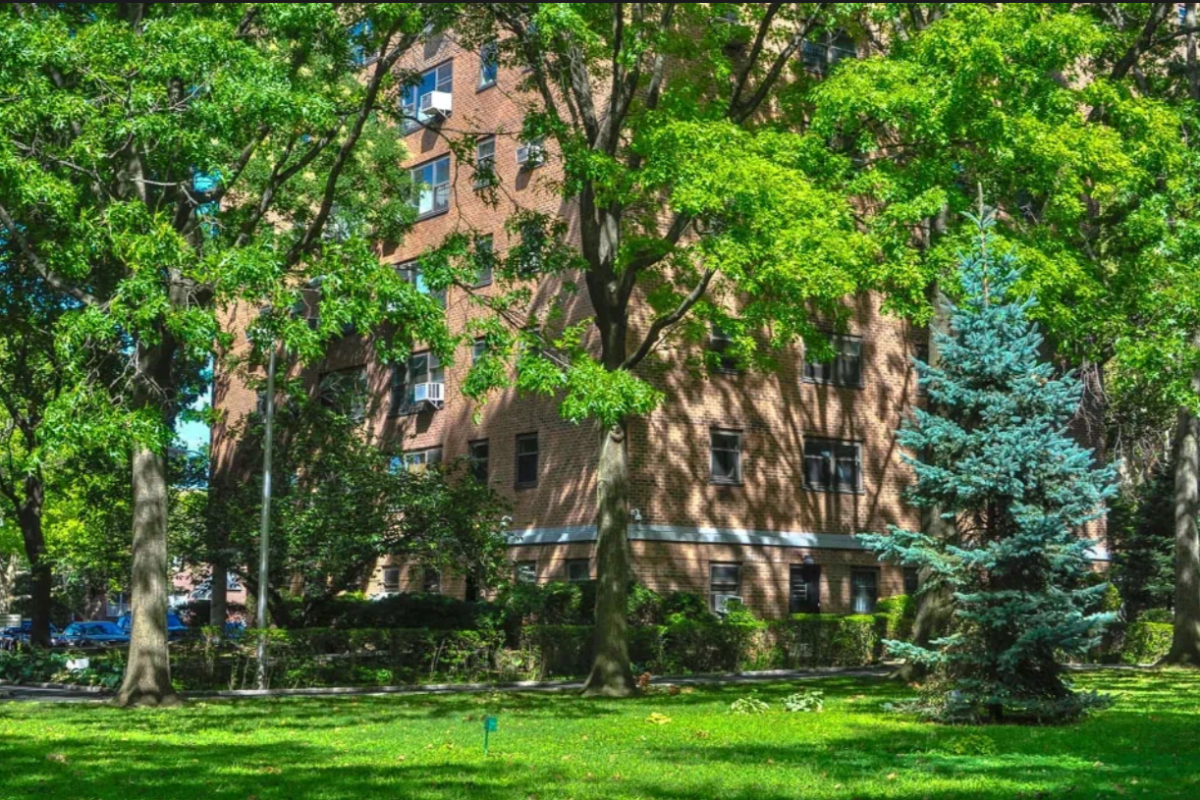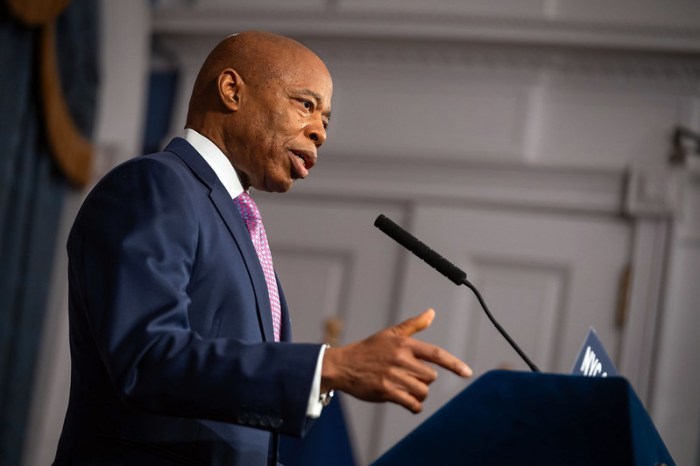BY BILL WEINBERG | The week the Berlin Wall came down in November 1989, I moved into my current digs in the enclave today known as Noho. Then, to the extent that it had a name at all, it was the Bowery. That thoroughfare itself was still the domain of the down and out, and the blocks to the west were a strange mix of gas stations and decaying, increasingly abandoned light-industrial outlets alongside faded architectural relics from the antebellum period, when the Astors, Delanos and Vanderbilts made it the ritzy part of town. There was little foot traffic, and you had to worry about burglaries and car break-ins.
The building’s tenants were actually on rent strike when I moved in — getting the apartment through personal connections — because of the landlord’s failure to do routine maintenance. Rather than fixing the rickety stairs, he opened vacant apartments to crack heads and sent hired goons around to intimidate the tenants.
Boy, do I miss those days.
No, really. Because what brought me to the East Village in the first place isn’t really here anymore. Reflecting on this a generation later illuminates some strange cultural ironies of urban “redevelopment.” …
I grew up in Jackson Heights in the ’70s, a part of Queens which even then was intensely multicultural. But the South Asians and South Americans then moving in faced a neighborhood still dominated by an older and more conservative generation of Irish, Jews, Slavs and Italians. There was little alternative culture. I was one of a small handful of hippie and punker types in Newtown High School’s 1980 graduating class of some 1,000, and there wasn’t even anyplace for youth to hang out. I thought it was dull and provincial, and I hungered for a “scene.”
So in my teens, I started hanging in the East Village, which I thought was rad and underground and a “scene.” I first gravitated to Washington Square, listening to the folk singers and (I confess) buying loose joints. But I was inevitably drawn into the run-down, alluring zone to the east. I still remember the first time I saw Astor Place, now the northern hub of what’s called Noho. It reeked of intellectual ferment. In a cranny of a storefront along St. Mark’s Place was a cluttered bookstore with piles of dusty, dog-eared esoterica. On the corner of Second Ave., Tuli Kupferberg — a counterculture legend I was only then vaguely aware of — was selling his own self-published poetry and crudely drawn, scatological comix.
I started going to punk shows at C.B.G.B. and, later, hanging out with the remnant faction of the Yippies at their notoriously malodorous — think cat urine mixed with marijuana — headquarters at 9 Bleecker St.
Tompkins Square Park at that time was still a hostile and intimidating no-go zone virtually controlled by drug dealers. So was Union Square. But Alphabet City was filled with little punk-rock venues and after-hours dance clubs — as well as heroin “shooting galleries” and street crack dealers. The Nuyorican Poet’s Cafe — still in a hole-in-the-wall location, before its later renaissance — was one of several such creative hangouts that came and went. The very atmosphere of decay — the cheap rent, and the scent of danger scaring away the bourgeoisie — fed the cultural fecundity. I began to understand that there is a political economy that allows (or doesn’t) the existence of a “scene.”
In the ’80s, I did a few years as a nomadic hippie, including a brief stint in San Francisco’s Haight-Ashbury, with its similar cultural trajectory. When I landed back in New York, I first made Brooklyn my home, but still with a foot in the East Village scene — then being revitalized by squatters, anarchists and artists, especially in the Alphabet City area. I started doing a column for the arts-and-politics weekly Downtown (now defunct), covering the unrest around Tompkins Square after the August 1988 riot turned the park into a class-war battleground.
Losing my Flatbush apartment just as one opened up for me in Noho, I became a resident of the greater East Village at the height of the resistance movement against gentrification, spearheaded by the squatters and the homeless folks who established an encampment in Tompkins Square.
The closing and near razing of Tompkins Square by the city government in 1991 was of course the turning point, when the resistance was dealt a decisive defeat and alternative culture began to be cleansed from the neighborhood, along with street crime and drug dealing.
The utter transformation of the East Village is witnessed by the closing of the legendary C.B.G.B. in 2006 — and the proliferation of suburban-style chains like Whole Foods, K-Mart and 7-Eleven (at least along the Bowery and Astor Place, if not yet in Alphabet City). Starbucks outlets proliferate like mushrooms after the rain, while small independent coffee shops go under. Barnes & Noble, which for years maintained a big store on Astor Place, forced the independent bookstore immediately across the street out of business, and even neighborhood institution St. Mark’s Bookshop teetered on the brink of insolvency and closure.
One bitter irony is that the squatters of Alphabet City were themselves the vanguard of the very social process they sought to resist. They helped make the neighborhood fashionable for the artists who followed them, as radical chic gave way to bourgeois chic. The yuppies shortly followed the artists, and the process of cultural cleansing is now nearly complete.
Noho, anchored by Cooper Union, is lurching more precipitously from a fecund past to a sterile future than any other enclave in Lower Manhattan. The new buildings that Cooper Union is developing like outsized satellites around its stately and venerable old main edifice overlooking Astor Place may have state-of-the-art environmental design and energy efficiency, but look like something out of a bad sci-fi movie. On the Bowery, upscale high-rise hotels exist side by side with the few remaining homeless shelters and Salvation Army-type missions.
The tenants’ association that led the rent strike in my building prevailed in its struggle; the city seized the building from the old sociopath landlord, but shortly flipped it to a new, less-dirty one. The rickety stairs have long since been fixed, and a trendy restaurant has opened in the downstairs storefront that was an abandoned tool-and-die shop when I first moved in. The area now called Noho is still technically zoned industrial, but you’d never know by looking at it; the zoning variances are given out like candy.
One by one, the last of the rent-stabilized tenants in my building have moved out or died. The new decontrolled tenants view the few remaining stabilized tenants such as myself with suspicion, if not outright contempt. A nearly apartheid-like system now prevails in the building. The new tenants come and go with a high turnover rate, and of course rents get jacked up every time a new lease is signed. The new, increasingly transient tenants have no commitment to the neighborhood (if it can still be called one); the time when the building’s inhabitants all knew each other is long gone. The notion of a powerful — or any — tenants’ association is impossible to contemplate. As one of my old neighbors put it as he finally moved out a few years back, that leaves me “the last nudnik on the block.”
Perhaps not quite the last, but I feel more like an anachronism every day as the Astor Place area is redeveloped. And I believe I may in fact be the last remaining tenant in New York City with both a bathtub in the kitchen — an old claw-foot original — and a detached toilet down the hallway. I’ve never actually been to the Tenement Museum on Orchard St., because I feel like I practically live in a museum.
Now here’s the most delicious irony. … Over the years, as the East Village has been thoroughly colonized and Noho nearly suburbanized — a genuine “scene” has blossomed in Jackson Heights. The staid neighborhood of my youth is now the heart of the city’s Latin gay community; in the shadow of the elevated subway line above Roosevelt Ave., Colombian coffeehouses feature live flamenco at night, and little clubs blare the sounds of Mexican and Colombian rock bands. There is at least one small bookstore offering occult and esoteric literature en español. Turn onto 74th St., the Indo-Pakistani drag, and locally mixed bhangra beats pulse from storefronts. The Indian food on this strip is the best in the city — far better than the fare on the East Village’s Sixth St., I’m afraid. Through a mixture of “white flight” and attrition, the new generation of immigrants inherited the neighborhood, and opened a new cultural space.
So now when I want to get out of my boring, sterile neighborhood, I get on the F train for a fix of authentic, alternative culture, just like when I was 17… only now, in the other direction.
The role of bohemia in urban change is paradoxical, simultaneously creative and destructive. In the ’60s, the northern half of the Lower East Side first became the East Village as the area was colonized by artists and hipsters who were priced out of Greenwich Village proper. In the ’90s, scenesters who were priced out of the East Village jumped the river and similarly turned Williamsburg into “Billyburg.” Now, such types priced out of Williamsburg are turning Bushwick into “East Williamsburg.”
Maybe Jackson Heights will be able to avoid this fate, for a while. While the Village-to-Williamsburg evolution followed a geographic and cultural trajectory from the original days of beatnik glory in the ’50s, the scene in Jackson Heights is an entirely homegrown and organic one; it wasn’t inherited from the past, to be reified and co-opted by corporate culture, the way Starbucks draws on the bohemian mystique of the coffeehouse. It is in vivo, the way the Beats themselves were more than half a century ago. I should shut up, lest the culture vultures descend there more quickly… .
I’m confident that somewhere in New York, genuine culture will survive, for many years to come. But the metamorphosis of the East Village leaves me in grim awe at the seemingly inexorable powers of cultural erasure.
Weinberg produces the Web site WorldWar4Report.com

































